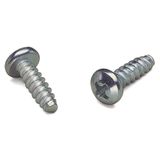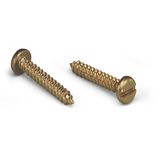WAGO Mounting materials





wago mounting materials load classes, finishes, and geometry
Channel and tray supports land on familiar grids: 25/50 mm hole pitch, elongated slots (7×25 mm or similar) for tolerance, and rail depths that keep deflection under control. Pre-galv (e.g., Z275) handles dry interiors; HDG to EN ISO 1461 or stainless A2/A4 goes into washdown or coastal areas. Publish maximum span, allowable deflection (L/200 typical), and anchor type per wall/ceiling so crews don’t recalc on ladders. When you specify wago mounting materials, add clamp ranges and thread sizes on the same line as the finish.
wago installation materials boxes, rails, and pathway interfaces
Backplates, DIN rails, and junction bodies should share a single bolt pattern so plate swaps don’t disturb glands or labels. Keep Ø68 mm cutouts and 60 mm screw lines where device plates coexist, and reserve M16/M20/M25 entries with stated torque for compression glands. Divider plates preserve SELV/mains separation; marker strips run unobstructed above terminals. Stock wago installation materials by box depth, entry set, and divider option so first-fix matches your acceptance script.
wago support brackets spans, deflection, and anchors
Cantilever arms, trapeze hangers, and L-brackets do the real work. Quote span tables at 20/30/40 kg per meter with deflection limits, and pair them with anchor classes (M8/M10/M12) and embed depths for concrete or hollow block. Slotted faces ease alignment; anti-rotation teeth keep loads from creeping. Crews tag wago support brackets by length, finish, and rated span so the right arm shows up with the right anchor and washer set.
wago fastening components bolts, rivets, and anti-vibration inserts
Fasteners fail spares programs when thread and coating don’t match the steel around them. Use 8.8 zinc-plated for interiors, HDG sets with isolating washers outdoors, and A4 where chemicals or salt live. Serrated flanges speed assembly; nyloc or prevailing-torque nuts resist shake. Blind rivets and rubber anti-vibration bushes stop oil-canning on thin skins. Kits labelled wago fastening components should list thread, head style, finish, and target torque (e.g., 8–12 Nm on M6, 20–35 Nm on M8; device label prevails).
wago installation hardware preconfigured rails, bars, and plates
Factory-built rail assemblies cut FAT time: rail + end-stops, N/PE bars, jumpers, and printed tag IDs that mirror your schematics. Backplates arrive pre-drilled for gland threads and marker windows; door cutouts match handle throws. With wago installation hardware, include a front sheet stating conductor windows, strip lengths (8–11 mm), and torque bands—then repeat those notes inside the door.
wago mounting accessories adapters, spacers, and repair sets
Refurb jobs need forgiveness. Adapter shoes shift hole centers without fresh drilling; spacer blocks (2–10 mm) correct proud plaster or tile planes; repair collars rescue oversize cutouts while holding the trim line. Cable saddles and edge guards protect jackets at sharp turns. Stock wago mounting accessories by substrate (gypsum, masonry, metal stud) so crews aren’t mixing anchors at midnight.
wago electrical supports seismic restraints, EMC bonds, and hygiene
Where vibration or EMC matters, brace frames with diagonal ties and fit 360° braid clamps at gland plates; bond each segment to the earthing bar at predictable intervals. In hygiene zones, choose smooth-surface supports and closed profiles that don’t trap residue, plus stainless fixings with food-safe lubricants. Document these rules with wago electrical supports so acceptance photos and resistance measurements tell a consistent story.
Technical parameters and standards worth fixing in the spec
- Hole/slot pattern: 25/50 mm pitch; elongated 7×25 mm typical.
- Materials/finishes: pre-galv interiors; HDG (EN ISO 1461) or stainless A2/A4 for harsh zones.
- Anchors: M8/M10/M12 with stated embed depth; washers matched to coating.
- Wiring practice: SELV/mains segregation via barriers; 8–11 mm strip windows; torque per device label.
- EMC: 360° shield bonds at gland plates; single-point ground strategy documented.
- IP integrity: compression glands sized to cable OD; torque ranges printed.
Selection checklist for B2B buyers
- Environment first: pick finish (pre-galv/HDG/stainless) and any hygiene requirements.
- Span and load: fix allowable deflection and bracket length; match anchors to substrate.
- Entries and glands: state thread sizes, clamp ranges, and torque so IP survives service.
- Rails and plates: lock hole patterns, door cutouts, and marker strip positions.
- Small parts: choose fastener grade/finish and anti-vibration elements to suit the space.
Advantages of working with Bankoflamps
Bankoflamps operates on clear trade terms: you receive individual B2B pricing with custom offers and support from a dedicated account manager. Quote turnaround is quick—about an hour—and ordering by EAN/MPN is straightforward. In the client portal you can check live EU-warehouse stock, current lead times, and order status, and download price lists that stay updated; purchase history and analytics are available for planning. Trusted customers may use post-payment terms up to 30 days. We group shipments to keep delivery costs down, hold prices with stated validity dates, and supply clients across France, the Baltics, Germany, Spain, Italy, Belgium, and the Netherlands.